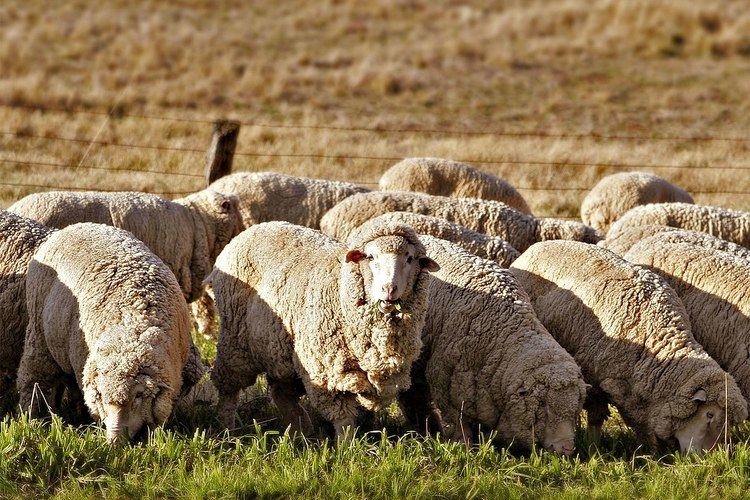 | ||
Sheep rearing is the raising and breeding of domestic sheep. It is a branch of animal husbandry. Sheep are raised principally for their meat (lamb and mutton), milk (sheep's milk), and fiber (wool). They also yield sheepskin and parchment.
Contents
Sheep can be raised in range of temperate climates, including arid zones. Farmers build fences, housing, shearing sheds and other facilities on their property, such as for water, feed, transport and pest control. Most farms are managed so sheep can graze pastures, sometimes under the control of a shepherd or sheep dog.
The major sources of income for a farm will come from the sale of lambs and the shearing of sheep for their wool. Farmers can select from various breeds suitable for their region and market conditions. When the farmer sees that a ewe (female adult) is showing signs of heat or estrus, they can organise for mating with males. New born lambs are typically subject to tail docking and males may be castrated.
Sheep production worldwide
According to the FAOSTAT database of the United Nations Food and Agriculture Organization, the top five countries by number of heads of sheep (average from 1993 to 2013) were: mainland China (146.5 million heads), Australia (101.1 million), India (62.1 million), Iran (51.7 million), and the former Sudan (46.2 million).
In 2013, the five countries with the largest number of heads of sheep were mainland China (175 million), Australia (75.5 million), India (53.8 million), the former Sudan (52.5 million), and Iran (50.2 million). In 2013, the number of heads of sheep were distributed as follows: 44% in Asia, 28.2% in Africa; 11.2% in Europe, 9.1% in Oceania, 7.4% in the Americas.
The top producers of sheep meat (average from 1993 to 2013) were as follows: mainland China (1.6 million); Australia (618,000), New Zealand (519,000), the United Kingdom (335,000), and Turkey (288,857). The top five producers of sheep meat in 2013 were mainland China (2 million), Australia (660,000), New Zealand (450,000), the former Sudan (325,000), and Turkey (295,000).
U.S. sheep production
In the United States, inventory data on sheep began in 1867, when 45 million head of sheep were counted in the United States. The numbers of sheep peaked in 1884 at 51 million head, and then declined over time to almost 6 million head.
Since the 1960s, per capita consumption of lamb and mutton declined from nearly 5 pounds to just about 1 pound, due to competition from poultry, pork, beef, and other meats. Since the 1990s, U.S. sheep operations declined from around 105,000 to around 80,000 due to shrinking revenues and low rates of return. According to the Economic Research Service of the United States Department of Agriculture, the "sheep industry accounts for less than 1 percent of U.S. livestock industry receipts."
